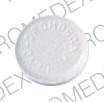Levo-Dromoran Interactions
There are 393 drugs known to interact with Levo-Dromoran (levorphanol), along with 16 disease interactions, and 1 alcohol/food interaction. Of the total drug interactions, 122 are major, 270 are moderate, and 1 is minor.
- View all 393 medications that may interact with Levo-Dromoran
- View Levo-Dromoran alcohol/food interactions (1)
- View Levo-Dromoran disease interactions (16)
Most frequently checked interactions
View interaction reports for Levo-Dromoran (levorphanol) and the medicines listed below.
- Adderall (amphetamine / dextroamphetamine)
- alpha-lipoic acid
- alprazolam
- Ambien (zolpidem)
- amlodipine
- arnica topical
- atropine / hyoscyamine / phenobarbital / scopolamine
- Bromaline (brompheniramine / pseudoephedrine)
- buprenorphine
- Calan (verapamil)
- Catapres (clonidine)
- Celexa (citalopram)
- Coenzyme Q10 (ubiquinone)
- Coumadin (warfarin)
- Crestor (rosuvastatin)
- Desoxyn (methamphetamine)
- Dilaudid (hydromorphone)
- Fioricet (acetaminophen / butalbital / caffeine)
- Hytrin (terazosin)
- Inderal (propranolol)
- Klonopin (clonazepam)
- L-Carnitine (levocarnitine)
- losartan
- magnesium citrate
- morphine
- Nubain (nalbuphine)
- Percocet 5 / 325 (acetaminophen / oxycodone)
- Plavix (clopidogrel)
- pravastatin
- Restoril (temazepam)
Levo-Dromoran alcohol/food interactions
There is 1 alcohol/food interaction with Levo-Dromoran (levorphanol).
Levo-Dromoran disease interactions
There are 16 disease interactions with Levo-Dromoran (levorphanol) which include:
- impaired GI motility
- infectious diarrhea
- prematurity
- acute alcohol intoxication
- drug dependence
- hypotension
- intracranial pressure
- respiratory depression
- gastrointestinal obstruction
- adrenal insufficiency
- liver disease
- renal dysfunction
- seizure disorders
- urinary retention
- arrhythmias
- biliary tract disease
More about Levo-Dromoran (levorphanol)
- Levo-Dromoran consumer information
- Compare alternatives
- Reviews (3)
- Drug images
- Side effects
- Dosage information
- During pregnancy
- Drug class: Opioids (narcotic analgesics)
Related treatment guides
Drug Interaction Classification
| Highly clinically significant. Avoid combinations; the risk of the interaction outweighs the benefit. | |
| Moderately clinically significant. Usually avoid combinations; use it only under special circumstances. | |
| Minimally clinically significant. Minimize risk; assess risk and consider an alternative drug, take steps to circumvent the interaction risk and/or institute a monitoring plan. | |
| No interaction information available. |
See also:
Further information
Always consult your healthcare provider to ensure the information displayed on this page applies to your personal circumstances.


